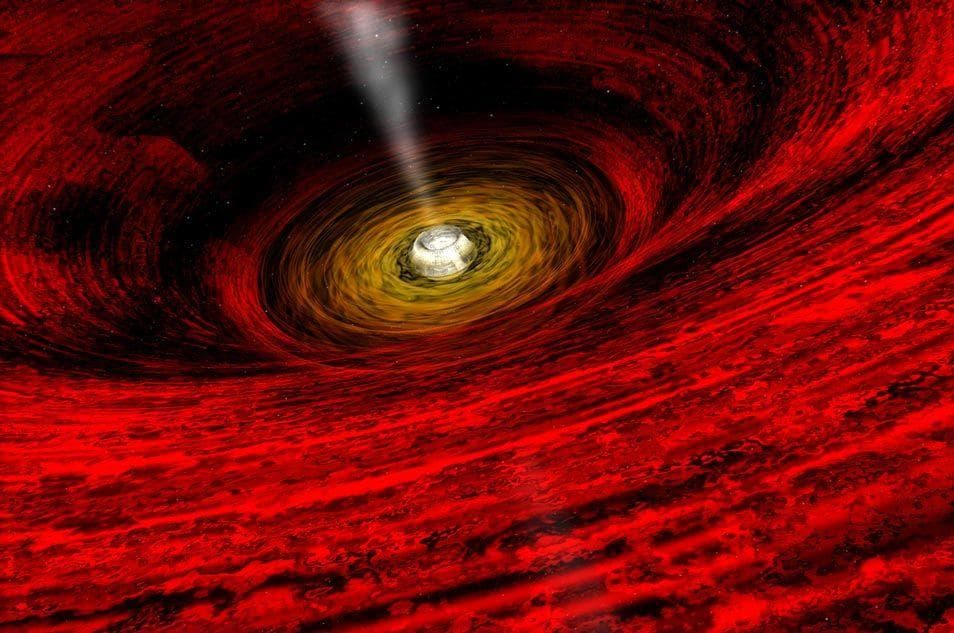-
(#3) 'Oumuamua Has Two Names
An object this unusual has to have a name that fits. 'Oumuamua was discovered via a University of Hawaii telescope, and its nickname is Hawaiian for "a messenger from afar arriving first." 'Oumuamua's formal name, 1I/2017 U1, has a very specific meaning.
The "I" stands for "interstellar." Objects similar to 'Oumuamua have "C" or "A" names, which places them in either comet or asteroid categories, but 'Oumuamua is so different from what we know of both, it has been given an entirely different designation.
-
(#6) It's Covered In "Carbon Rich Gunk"
‘Oumuamua is a naturally created object with a hard exoskeleton, which took a while to form - like, it took billions of years. Scientists believe its exterior started out as ice but is now red, hard "gunk" that was probably created by interstellar radiation over time.
“The (object's) surface layer is what happens if you take comet ices and comet dust grains and bake them with high energy particles for millions or even billions of years,” said Fitzsimmons.
-
(#14) There Are More Interstellar Travelers Out There
It's the first we've gotten to experience, but there are many more interstellar travelers like ‘Oumuamua out there. They may have come through our solar system before, but it's only now we have the technology to spot them.
One researcher, Fabo Feng, a postdoctoral fellow from the University of Hertfordshire, believes there are "about 46m similar interstellar objects crossing the solar system every year... which may be sending us important information about how stars and planets formed."
-
(#1) 'Oumuamua Is The First Discovered Body From Beyond Our Solar System
One of the strangest things about 'Oumuamua is how it appeared so suddenly and without any warning; it's almost as if it was dropped into our solar system by some giant unknown hand. It's safe to say we haven't seen anything like this before.
'Oumuamua - its official name is 1I/2017 U1 - was first spotted by the University of Hawaii’s Pan-STARRS1 telescope on October 19, 2017. NASA Planetary Defense Officer Lindley Johnson said,
"We are fortunate that our sky survey telescope was looking in the right place at the right time to capture this historic moment. This serendipitous discovery is bonus science enabled by NASA’s efforts to find, track and characterize near-Earth objects that could potentially pose a threat to our planet."
-
(#12) 'Oumuamua Will Zip Past Pluto By 2024
Scientists are studying 'Oumuamua while they still can. It's passing through our solar system at a pretty high rate of speed — 85,700 mph. The Atlantic's Marina Koren revealed,
"‘Oumuamua is now outside the orbit of Mars. It will pass the orbit of Jupiter next May, then Neptune in 2022, and Pluto in 2024. By 2025, it will coast beyond the outer edge of the Kuiper Belt, a field of icy and rocky objects. It will take many more years for the object to reach the Oort cloud, another region of floating objects, at the edge of the solar system."
-
(#8) Some Astronomers Thought It Was An Alien Spacecraft
Because it's shaped the way it is, scientist wondered - could ‘Oumuamua be some kind of spacecraft? It couldn't hurt to find out. Breakthrough Listen project scientists used the Green Bank telescope in West Virginia to listen for any galactic chatter from the object.
They've only found silence, thus far and there's no evidence that ‘Oumuamua is anything more than a space rock hurling past us to some unknown destination. But they plan to keep on listening. Avi Loeb, professor of astronomy at Harvard University and an adviser to the Breakthrough Listen project, said,
“This is a fishing expedition. We are most likely not to find anything, but it is worth steadily checking our fishing hooks. We will keep searching for artificial signals from ‘Oumuamua or any other interstellar object that will be discovered in the future.”
New Random Displays Display All By Ranking
About This Tool
Astronomers have discovered a new "interstellar highway" that runs through the solar system in recent years, which can speed up the travel time of spacecraft from the earth to remote parts of the solar system in the future, and monitor and research interstellar objects that may collide with the earth. Mankind has never stopped exploring the solar system. The first exploration was carried out through telescopes.
With the advancement of science and technology, astronomers have been able to observe other interstellar objects in the solar system through high technology such as space probes. The random tool introduced amazing interstellar objects that have been caught through the solar system.
Our data comes from Ranker, If you want to participate in the ranking of items displayed on this page, please click here.










